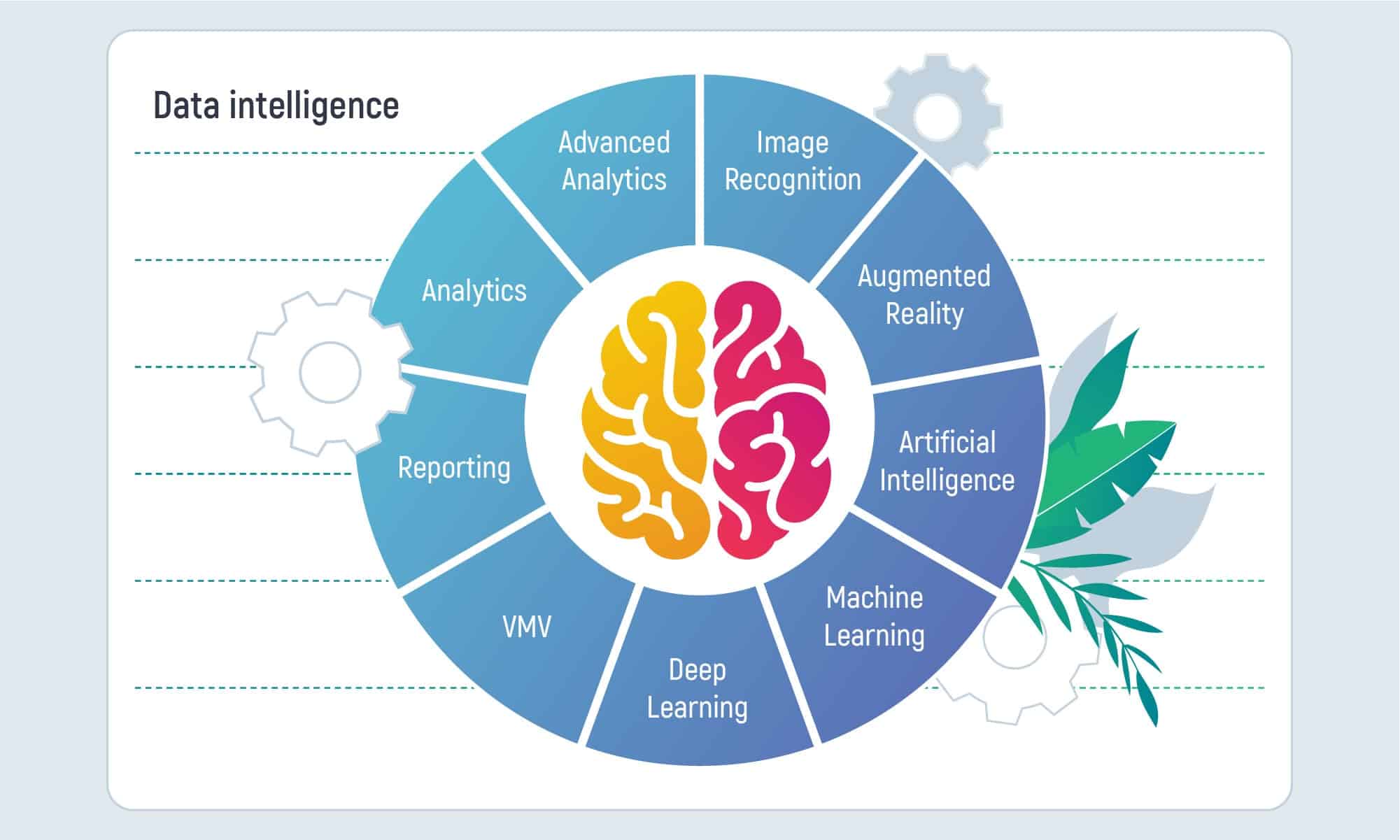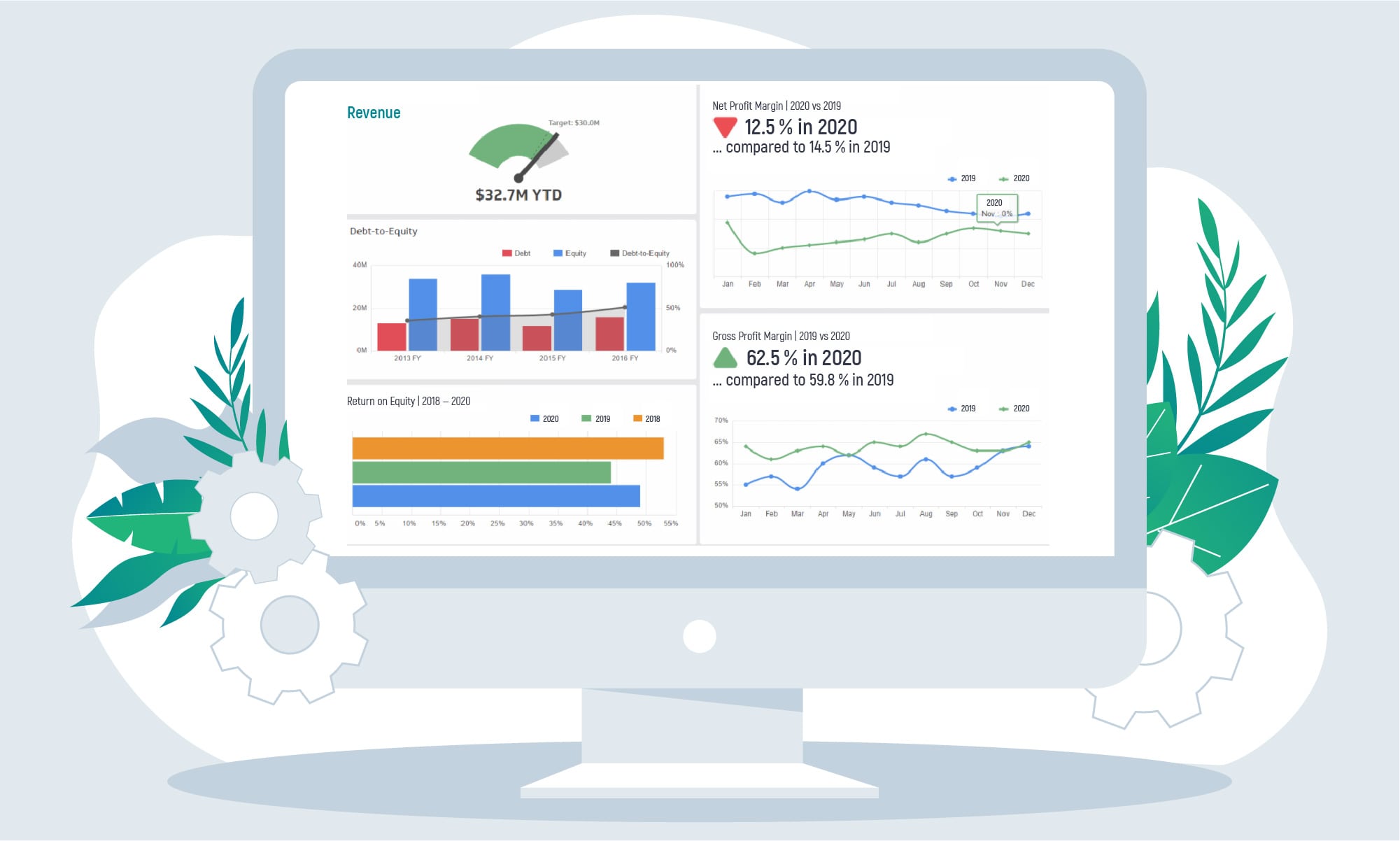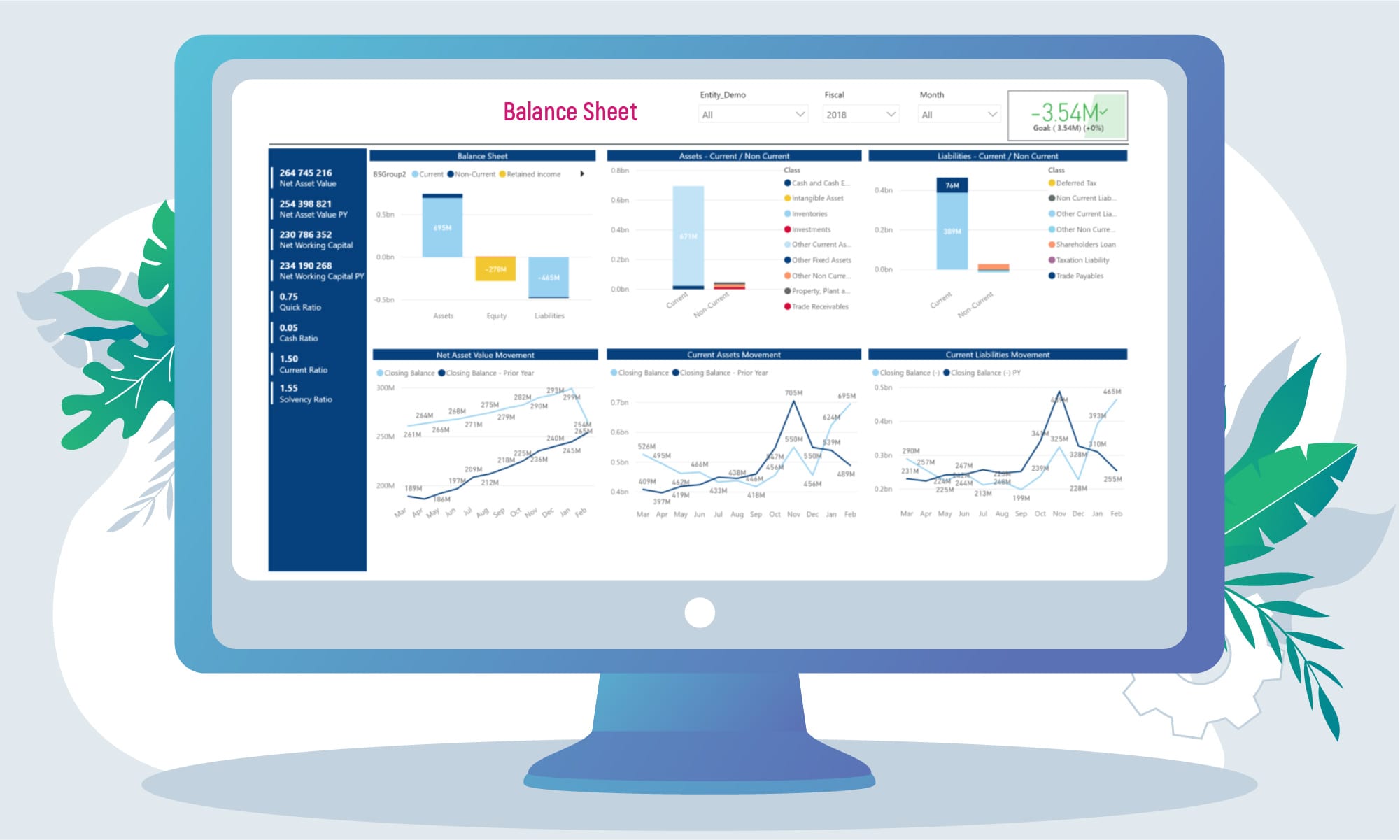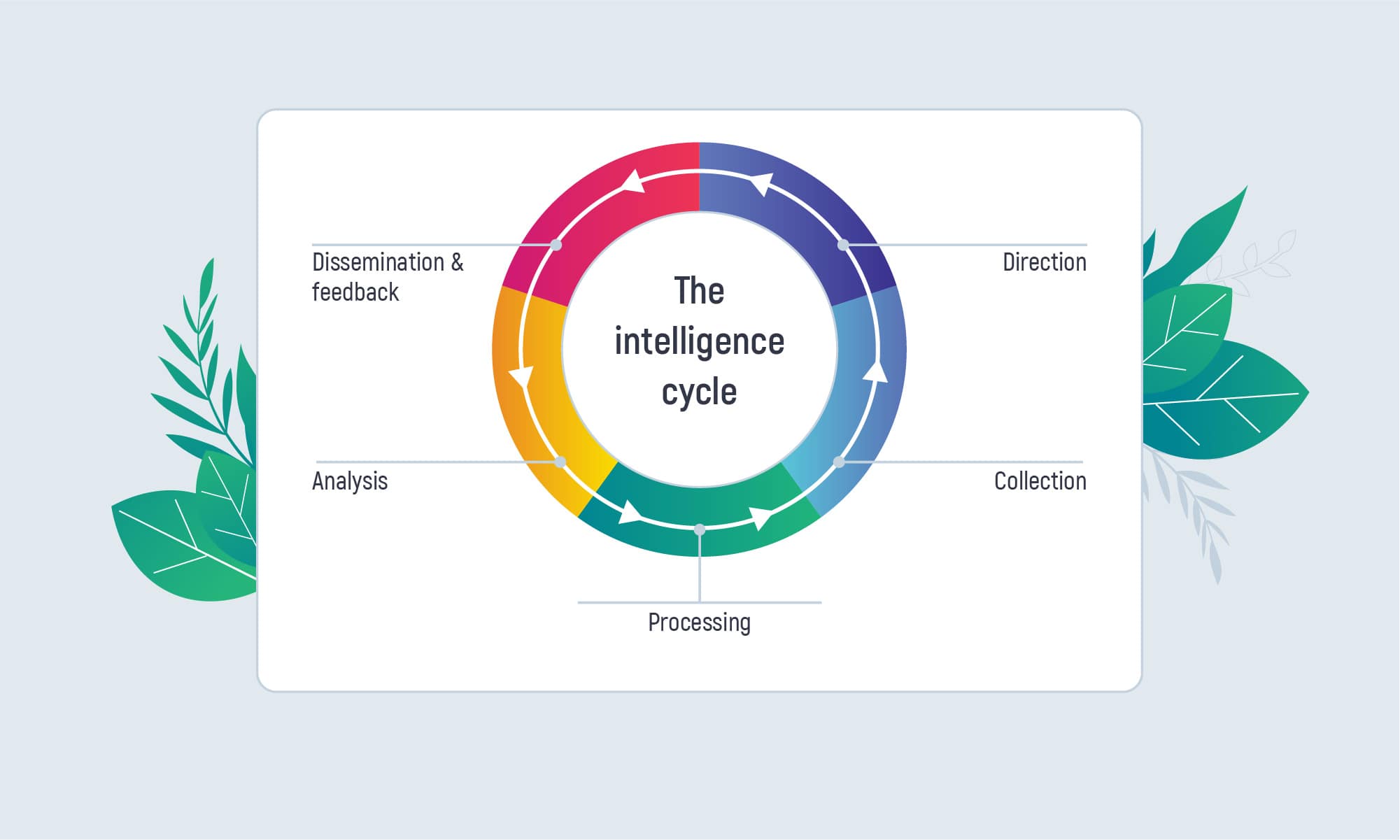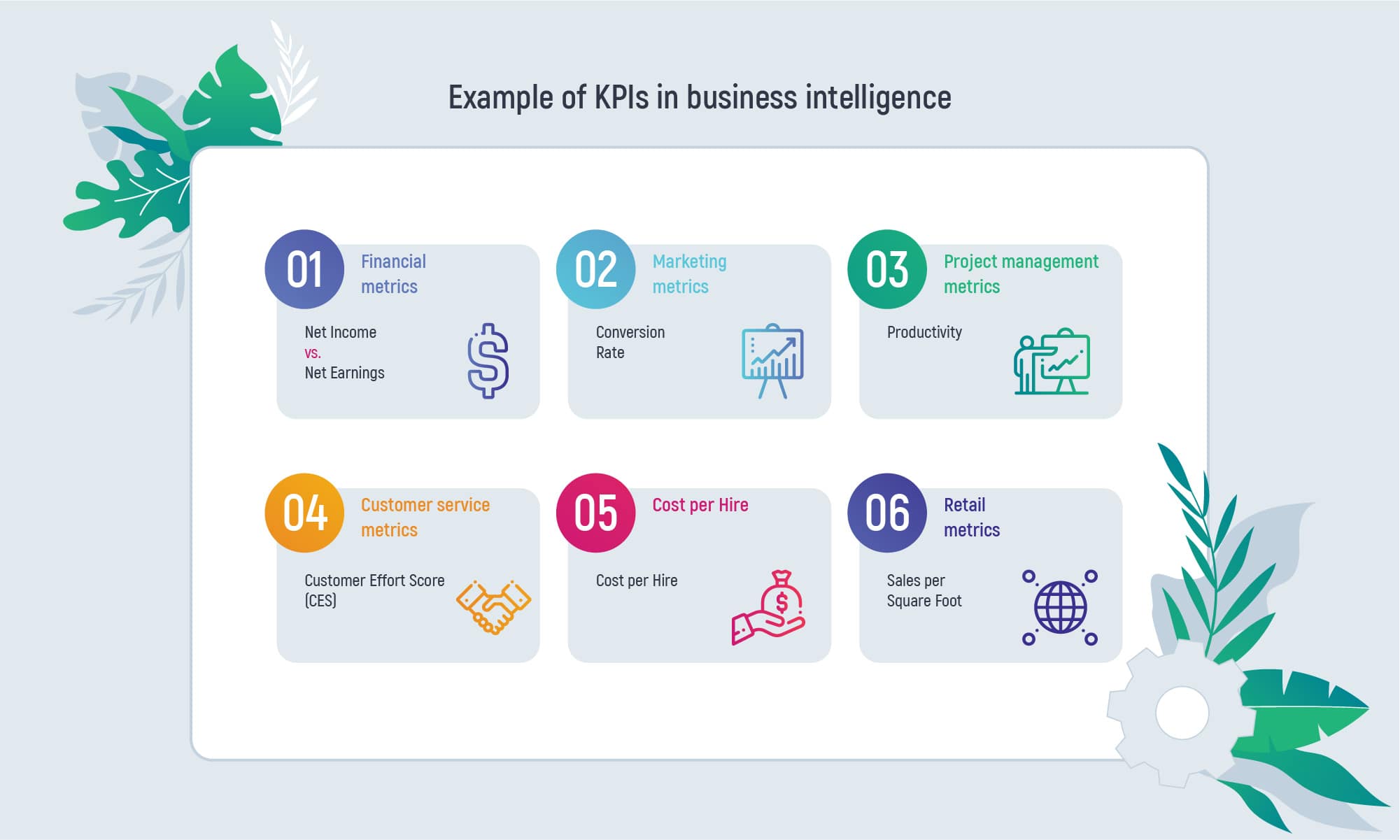Embarking on the journey toward organizational goals involves strategic planning and a roadmap for success. In this pursuit, data becomes the compass guiding decisions and actions. And that's why more and more companies should embrace business intelligence (BI) strategies.
Seen as a gateway to heightened profitability, newfound revenue streams, and the ability to navigate market trends and business challenges, BI is becoming synonymous with effective decision-making and robust data analysis. As businesses increasingly recognize the transformative potential of BI, the question arises: How does one prepare for this data-driven voyage? Join us as we unravel the steps to develop a compelling business intelligence strategy.
- What is BI strategy?
- Stages of BI
- Why Business Should Implement BI?
- Profitable business decisions
- Accurate reporting
- Identified trends
- Risk management
- Efficient resource allocation
- Data accessibility
- Time efficiency
- Business intelligence cycle
- Key Elements of a Successful BI Strategy
- Vision
- People
- Process
- Architecture
- Tools
- How to Build a BI strategy?
- Define your current state
- Build a BI roadmap
- Present BI to the stakeholders
- Set the KPIs and requirements
- Select the tools
- Create a prototype
- Set the team
- How to Document a BI Strategy?
- Consider Inoxoft Your Trusted Partner
- The benefits of outsourcing BI
- Final Thoughts
What is BI strategy?
The strategy appeared in the 1950s as a technology called decision support systems. Over the next decades these systems turned into a comprehensive tool mainly due to the increase in the amount of data that companies can collect on their internal processes their customers (the rise of the internet and computer usage accelerated this process).
Additionally, it became cheaper to store data in larger quantities than it used to be. Companies received access to endless sets of data (internet usage records, social media activity, and so on). BI aims to find patterns and trends among all this data: anticipated is an annual growth rate (CAGR 2023-2028) of 5.83% for revenue, leading to the attainment of a market volume of US$34.16 billion by the year 2028.
BI is about delivering relevant information to the right people at the right moment to achieve better decisions in a faster way. And to perform this, BI has methods to collect unstructured data and convert it into information to improve business decisions.
Stages of BI
BI exploits the data your business generates in all of its activities. Then it analyzes and visualizes this data to understand it and get valuable insights to make your business evolve by making better decisions. By collecting, structuring, and analyzing, BI converts raw data into meaningful information.
The BI process is usually divided into the following stages:
The reason companies invest in BI is data analysis. No matter how companies process their data, the insights from analytics reports affect all company’s processes. In reality, these two terms are often mixed up. BI uses past and present data to inform current decisions, while business analytics uses past data to explain current data and predict what will happen in the future. Furthermore, BI uses different analytics methods, including:
- Data mining (or discovery) includes automated analysis of large sets of data to find patterns.
- Text analytics combes through textual (unstructured) data (e-book or research paper) to find patterns. This can be used for linguistic analysis or sentiment analysis on social media or online customer feedback, etc.
- Business analytics draws connections between data and companies that use it to predict future trends, and reveal unknown inefficiencies in their systems.
Why Business Should Implement BI?
Implementing business intelligence roadmap is crucial for companies facing various challenges, such as underperforming employees, customer loss, inefficient resource utilization, and issues related to under or overstocking.
By delving into competitors’ data, BI allows your business to stay informed about market dynamics and make informed strategic moves. Most importantly, the implementation of BI not only addresses current challenges but also equips your company with the tools to thrive in a data-driven business environment.
Other benefits of using BI for your business include:
Profitable business decisions
As we’ve already mentioned, BI helps to gain insights from your data to make smarter business decisions. For instance, graphics and charts in dashboards don’t give a visual representation of your business performance. Naturally, visualization makes it easier to read and understand data, to observe trends, and see things that are going well and those parts that need improvement.
Accurate reporting
Business intelligence uses financial, operations data to generate accurate reports, visual representations (charts or graphs), or written information. In this way, every stakeholder (especially business owners) is every of every little change within the company.
Identified trends
BI analyzes an industry, markets, your competitors, your strengths and weaknesses and define trends. Thus, you’ll be the first one to know the future trends and uses opportunities.
Risk management
Every industry suffers from its own risks. It can be cyber threats, data leaks, etc. Hence, BI allows organizations to uncover, identify and reduce them in the most efficient way. For instance, with BI fintech institutions create secure intelligence platforms, reduce fraud and cyber attacks what was possible in a harder and longer way.
Efficient resource allocation
By providing a comprehensive view of data across departments, businesses can strategically allocate resources, both human and financial, with greater precision. It allows organizations to identify areas where investments yield the highest returns.
BI empowers decision-makers to align resources with organizational priorities, which results in a more agile and responsive organizational structure, where resources are directed to areas with the greatest impact, ultimately enhancing overall operational efficiency and maximizing the value derived from budget allocations.
Data accessibility
Most of the business data is easily accessible. In fact, there’s no need to code, perform data mining or hire experts, since the data can be exported from where it is stored (e.g. excel) via the BI tool within a few minutes. Then you need to crunch the numbers, analyze and visualize the data to start taking advantage of BI.
Time efficiency
BI tools automate data collection and analysis, also providing real-time insights for swift responses to market changes. Thanks to its automated reporting and dashboards, you can reduce manual effort and have an instant access to crucial data.
In today’s dynamic business landscape, BI’s time-saving capabilities are instrumental in maintaining agility and a competitive edge.
Business intelligence cycle
The business intelligence and strategy cycle involves collecting data from various sources, analyzing it for insights, disseminating findings through visualizations, and driving informed actions. By embracing it, businesses establish a dynamic framework for ongoing improvement, enhancing agility and resilience in a rapidly changing business landscape.
Its life cycle includes several important stages:
- Direction – determining the direction of development and goals.
- Collection – gathering data and information from all relevant sources.
- Processing – transforming raw data into a format, ready for analysis.
- Analysis – interpreting the processed data.
- Dissemination – communicating the newly-found insights to people.
Key Elements of a Successful BI Strategy
Business intelligence strategies involve collecting, analyzing, and interpreting data to gain insights that can drive better decision-making and ultimately improve business performance. The main elements of a business intelligence data strategy include:
Vision
The vision sets the direction and purpose of the BI strategy, articulating what the organization aims to achieve through the use of business intelligence: improve decision-making, increase operational efficiency, enhance customer satisfaction, etc.
People
This component focuses on the human resources that are required to implement and sustain the BI strategy, especially identifying the roles and responsibilities of individuals involved in data collection, analysis, reporting, and decision-making. It also involves ensuring that there is a culture of data-driven decision-making within the team.
Process
Defining the workflows and methodologies for how data is collected, stored, analyzed, and reported happens thanks to the process element. Since it includes considerations for data governance, data quality management, data integration, and data visualization, transparent processes help ensure consistency and reliability in BI activities.
Architecture
The architecture component addresses the technical infrastructure and support systems of the BI strategy, along with decisions about data storage, warehousing, modeling, integration, and the selection of appropriate business intelligence tools and technologies. The architecture must be designed to handle the volume and variety of data required for analysis.
Tools
The tools include the selection and implementation of software and technologies that enable data analysis and reporting, and include business intelligence platforms, data visualization tools, analytics software, as well as any other technologies necessary for extracting insights from data.
How to Build a BI strategy?
The business intelligence strategy is considered as some kind of a roadmap that aims to help businesses measure their performance and strengthen it with architecture and solutions. As an illustration, here are few steps to follow when building a business intelligence implementation plan:
Define your current state
To obtain the full potential of business intelligence and take your organization to the next level, you need to define simple questions:
- where you are at this moment?
- what do you want to achieve?
- what’s possible to achieve?
An efficient business intelligence implementation strategy will enable your business to grow and, so as an owner, be ready to answer some questions:
- Machine Learning – What, When, Why it will happen?
- Predictive Analytics – What may happen?
- Descriptive Analytics – What happened? What’s happening now?
Build a BI roadmap
Strategy for business intelligence starts with a plan. Naturally, there are many phases to implement BI at any organization, so the project roadmap should contain the why what who when, and how the implementation is going to happen. No matter which project management approach you use( agile, waterfall, etc), it is actually a smart decision to communicate when milestones and tasks of the project are completed.
A roadmap is the outlook of the milestones and deliverables in chronological order. In fact, the point is that it helps every employee to stay on the same page, be aware of what’s been done and what’s coming up, and enable them to adapt to changes.
Present BI to the stakeholders
The other thing to do before implementing a business intelligence plan into your company is to set the terms and define the meaning of BI with all your stakeholders. Since lots of employees are involved in the data processing, make sure that everyone is on the same page and has a mutual perception of what business intelligence development strategy is.
Set the KPIs and requirements
At this stage, you need to define the problem and think of the business goal you are going to reach with the help of BI development strategy. Setting the plans help you determine further parameters for BI such as:
- What data sources will be used?
- What is the business analytics you want to keep an eye on?
- What metrics can improve your performance and strategy?
- What are KPIs and evaluation metrics that define tasks as accomplished?
Select the tools
Selecting the tools for BI infrastructure usually depends on the industry, the size of the company, and your business needs. To understand what tool you need, it’s worth composing a requirement list for your business intelligence system and performs market research.
The BI market offers a number of tools that are available both as embedded versions and cloud-based (Software-as-a-Service) technologies. Some of the most used BI tools are Google Data Studio, PowerBI, Tabulae, Looker, Charito, Periscope Data, etc.
Create a prototype
It is a short project to verify tech concepts by proposing numerous simplified features, validate assumptions, test the product’s functionality and ensure the concept is implementable or vice versa. Also, it helps to find the source data and where there can be some transformation to secure massive amounts of data while the end-users will get access to it.
Set the team
Business intelligence strategy and roadmap can’t exist without people. Certainly, the best way to create a team is to gather experts from different departments of your company who give specific insights, have a different vision, and make architectural, technical, and strategic decisions. Usually, there are five main roles:
- Head of BI – the person with business and technological skills, who generates insights and drives BI implementation.
- BI engineer – the person who design, build, implement and set BI systems (the most common technologies used are SQL, MySQL, AWS Redshift, Hbase, BigSQL, Oracle, Apache Spark & Hadoop, SSIS, SSAS, Pentaho, Tableau, Power BI, etc).
- Business analyst – the person who provides the rest of the team with expertise in data validation, processing, and visualization. And transform the analytics into actionable insights.
- Data Scientist – the person who uses analytical, statistics tools, and machine learning to pull out actionable value from big data.
However, if you don’t have an in-house expert team, there is always an option to hire a vendor who will offer solutions that best suits your business needs.
How to Document a BI Strategy?
Documenting a business Intelligence strategy is crucial for ensuring that your goals, objectives, and implementation plan are clear. Here’s a step-by-step guide on how to document a BI strategy:
- Executive summary: summarize the key elements of the BI strategy in a concise manner, including the vision, objectives, and high-level approach. Include high-level insights into how BI will benefit the organization.
- Vision and objectives: clearly state the vision of the BI strategy, which should align with the organization’s overall goals, and then list the specific measurable objectives that the BI strategy aims to achieve.
- Project scope and requirements: after defining the scope, including the departments, processes, and data sources that will be included, identify the key stakeholders who will be involved in the implementation and use of your BI strategy.
- BI governance team: introduce the members of the business intelligence governance team, outline their roles, responsibilities, and reporting structures. This team will be responsible for overseeing the implementation and management of the BI strategy.
- Current state assessment: evaluate existing tools, data sources, and processes, and don’t forget to highlight strengths, weaknesses, opportunities, and threats (SWOT analysis) in the current landscape.
- Technology: detail the technology stack that will be used to implement the strategy — hardware, software, BI platforms, analytics tools, and any specialized technologies needed for data processing and analysis.
- Data management: describe how you will source, collect, store, integrate, and manage your data. The section should cover data governance, data quality, data modeling, data warehousing, and data security measures.
- Risk management: identify potential risks and challenges associated with the BI strategy and provide a plan for mitigating them.
When documenting each of these elements, be sure to include the precise objectives of expected outcomes for the BI strategy, key stakeholders and their roles in each element, and timelines for each element, including key milestones and deliverables to track progress and manage expectations more efficiently.
Consider Inoxoft Your Trusted Partner
Lots of industries, including healthcare, education, and fintech have adopted BI to use data and transform operations. Let us share with you our experience in implementing BI in fintech.
Our project is related to a small industry of currency trading that includes mechanisms of capital gain due to price shifts in currencies. The substantial income depends on the immediate adoption of an apt financial plan. Due to the quick fluctuation in the currency market, a group of traders launch their business, develop unique strategies and increase revenue. They trade at the world’s major stocks (New York, London, and Tokyo) and involve potential investors.
Despite the fact that traders had relevant experience, and developed custom strategies to gather revenue, the process of currency data analysis and price monitoring, was still performing manually what was time inefficient. So, our BI team developed a Software web application that eliminates manual work and instead creates sheets with optimized exchange rates info and enlists all generated orders for profitable purchases according to an established business strategy.
The benefits of outsourcing BI
- Cost and time savings
- Fresh, independent view from the outside of the company
- Expertise and professionalism
- Focus on core processes while the BI team perform its job
- Accuracy and scalability
Doesn’t matter whether you are a small business or large enterprise, you will enjoy the benefits from implementing Business Intelligence. As a matter of fact, partner with a reliable vendor to manage the business data and take advantage of the valuable insights it brings.
Final Thoughts
So, BI is the practice of analyzing the data your company generates to produce actionable insights that drive business decision-making. It may sound simple in theory, but it required lots of computer processing power, coding knowledge, and advances statistical skills. So, leave this big decision to us. Our BI team offers big data business strategy and big data development services to make sure your company adopts business intelligence in the most convenient way. Contact our CTO Brad Flaugher to get all the information.
Frequently Asked Questions
What is BI implementation strategy?
A business intelligence strategy is a plan on how to use the full potential of the data to optimize operations, boost performance, understand what is happening, and sometimes predict changes in your business.
How to build a BI strategy?
A business intelligence implementation strategy requires
- Creating the roadmap
- Setting KPIs
- Build a BI team or hire a vendor
- Choose the tools
Read the full article to discover the whole list of steps






